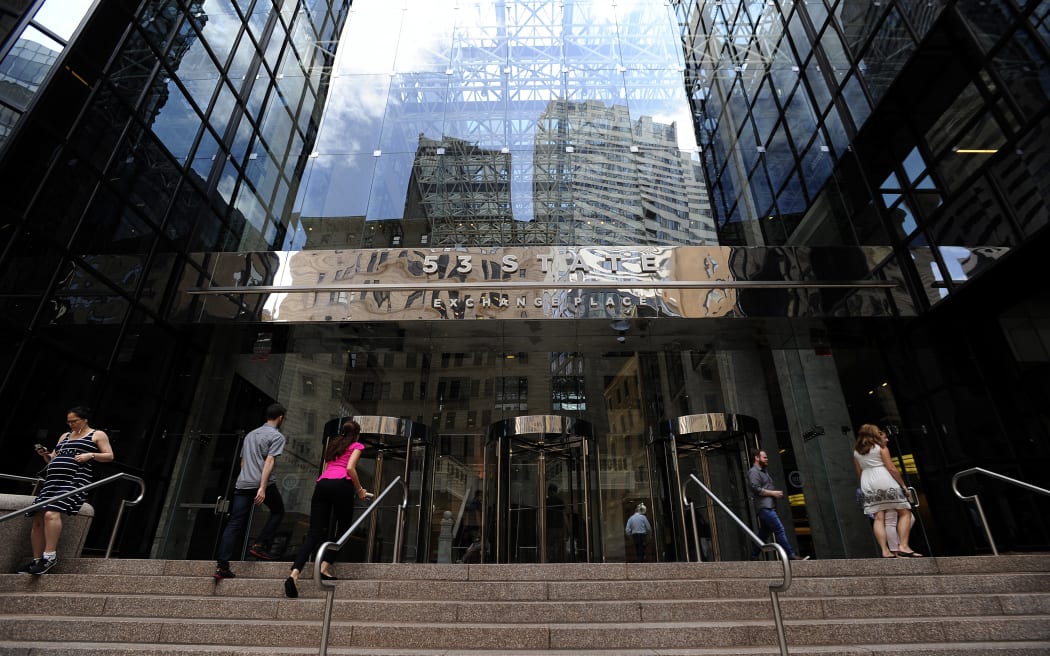It's 20 years since the Boston Globe exposed the child abuse scandal that rocked the Catholic church.

Photo: AFP
Martin Baron was editor of the Boston Globe and its award-winning Spotlight investigative team, which tenaciously uncovered widespread sexual abuse by priests, hushed up by the church paying private settlements to claimants.
The story was adapted for the big screen as Spotlight which won two Academy Awards.
The day before Baron started work at the Globe, the paper ran a piece by Pulitzer Prize-winning columnist Eileen McNamara, he tells Nine to Noon.
“It talked about a case of a priest who had been accused of abusing 80 kids. And at the end of the column, she said the truth may never be known because the documents that might reveal it, were under a confidentiality order, they were secret, they weren't being disclosed to the public.”
In his first meeting on his first day he and his team set about “getting to the truth of the matter.”
“The church was denying any wrongdoing. The lawyer representing victims, said that the cardinal himself was aware of one particular priest’s abuse, and that he continually reassigned him from parish to parish, enabling him to abuse again and again.”
The paper took a twin-pronged approach, he says.
“One was to go to court to try to get those documents, those internal documents disclosed and the second was to engage in a full-fledged journalistic investigation.”
They believed there was a public interest argument to getting the documents that church was keeping secret in the public domain.
“These children were all within the care of the church, that the church had a duty to protect them.
“And that if it had not protected them, if they had been subjected to abuse, and that there had been serial abusers within the church, and that the hierarchy of the church was aware of that serial abuse, and did nothing, in fact, actually enabled those priests to continue to abuse over and over again, by moving them from parish to parish, that we could show that there was a strong public interest in having those documents divulged.”
The paper with “50-50” odds went to court and won.
“We got the documents, not only in the case of the priest who had been accused of abusing more than 80 kids, but in all the cases within the diocese as well.
“And then the investigation went along the parallel track. We had the Spotlight team, which is a long-time investigative team over the Boston Globe.”
The Spotlight team began to get a sense of how broad this scandal was, he says.
“By looking at the old directories of the church, which we had in our own library.
"Because when a cleric was accused of abuse, credibly, typically that that priest was sent to a particular facility where supposedly he was being treated.
"And he's classified as sick leave. And so then the priest would come out of that facility and then be assigned to another parish. And so we could see the pattern.”
They went through every directory, looked at who was assigned to that particular facility, and then added them all up, he says.
“You could see that there were dozens upon dozens upon dozens of priests, who were credibly accused of abuse.
“And, of course, that meant that we needed to dig even further, we tracked down the survivors of that abuse, we made every effort to reach the priests themselves.”
The first story was published January 2002 and a further 900 followed.
They dug so deep because this was a bigger story than any individual case of abuse, he says.
“Not just how many priests had been accused of abuse, but what did the church do, or not do when it became aware of the abuse by those priests?
“And so we needed to document that. And that I think is what made all the difference in the world, that it wasn't just a numbers game. It was a documentation of a cover up, a pattern and practice within the church to fail to disclose scandalous behaviour on the part of hundreds of priests.”
Survivors started to come forward, and gradually more and more shared their stories with the Spotlight team, revealing how long this had been going on.
"Covering it up not just for a year, not just for five years, not even for 10 years, but for at least half a century.”
The work done by the Spotlight team shattered the protection the Catholic Church had enjoyed, Baron says.
“Our investigation and what it disclosed, wiped away that culture of deference.
“Immediately there were investigations by the press throughout the United States and in other countries throughout the world, far more aggressive than anything that had taken place before.
“Prosecutors in the United States and other countries, were now willing to conduct the sorts of investigations that they should have conducted decades earlier.
“And politicians were no longer, at least in certain countries, were no longer as deferential as they had once been, because of the power of the Catholic Church.”
The work invigorated investigative journalism in the United States, he says.
“So many of them [newspapers] rededicated themselves to investigative reporting. And it reminded us that we really need to listen to people who don't have power, because they have often something very powerful to say.”

